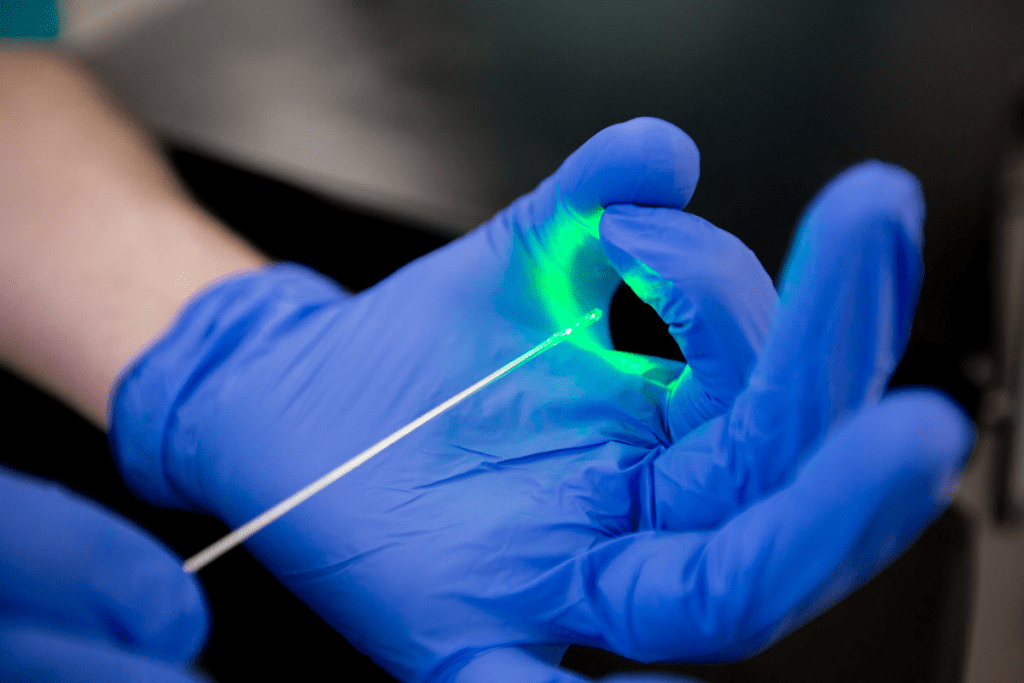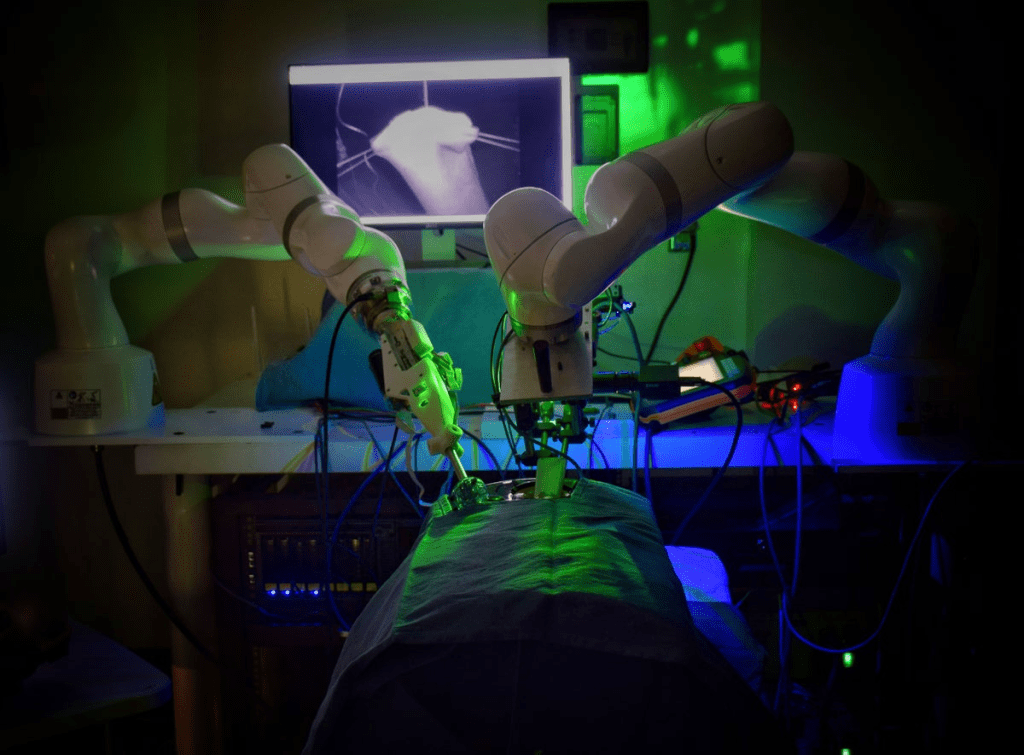Last Updated on October 31, 2025 by
Recovery after prostate operation explained with bleeding timelines and vital healing insights.
GreenLight Laser Therapy is a new way to treat urinary issues caused by an enlarged prostate. It works by removing extra tissue. This helps improve urine flow and lessen symptoms of Benign Prostatic Hyperplasia (BPH).
After the surgery, patients might see some bleeding, called hematuria. This is a common worry for those thinking about Green Light Laser Surgery. Usually, this bleeding goes on for a few days to about 2-3 weeks.

New studies have helped us understand bleeding patterns and risks better. This has made care for patients having prostate laser surgery even better. We aim to give full care and advice every step of the way.
Men with an enlarged prostate can find relief with GreenLight Laser Surgery. At Liv Hospital, we focus on the latest medical standards. We aim to give you the best care.
GreenLight Laser Surgery treats urinary problems caused by an enlarged prostate. It uses a laser to remove extra prostate tissue. This improves urine flow and reduces symptoms.

GreenLight Laser Surgery is a new way to treat BPH. It uses a laser to remove prostate tissue. This method is effective and has fewer side effects than old surgeries.
The surgeon uses a special tool to see the prostate and urethra. A laser fiber is then used to vaporize the extra tissue. This makes the urethra wider, helping urine flow better.
GreenLight Laser Surgery has many advantages. It has less bleeding risk, shorter hospital stays, and faster recovery. It’s safer for those at risk from big surgeries.
Choosing GreenLight Laser Surgery means getting a safe and effective treatment. It’s a popular choice worldwide for treating BPH. It fits our goal of providing the best care.
Understanding normal bleeding patterns after GreenLight Laser Prostate Surgery can ease patient worries. We know that surgery can be scary. Knowing what to expect during recovery is key.
Most patients see mild bleeding for a few days to 2-3 weeks after surgery. The bleeding is usually most intense in the first week. It then gets better over time. It’s important to know that some blood in the urine is common after surgery.
Key points to note about post-operative bleeding:

The type of bleeding after GreenLight Laser Surgery varies. Some may see intermittent spotting, while others may have more constant bleeding. It’s important to remember that blood in the urine is a normal part of healing.
Patients should be aware of the following:
While some bleeding is normal, there are times when you need to see a doctor. We will talk about these situations later.
Recovering from prostate surgery is a big worry for many. GreenLight Laser Surgery aims to make this easier. It’s a modern way to treat Benign Prostatic Hyperplasia (BPH) with a quicker recovery than old methods.
The green light surgery means a short hospital stay. Most patients go home the next day. It’s a treatment that can be done as an outpatient for many.
After the surgery, a catheter is used for about a day. It helps with urine drainage. The time needed can vary based on the patient.
Patients can slowly get back to their daily life after the greenlight procedure. But, they should avoid heavy lifting and hard exercise for a few weeks. This helps with a smooth recovery.
Most men don’t need much pain medicine after the surgery. They might feel like their bladder is full. This feeling is temporary and goes away by itself.
Knowing what to expect after GreenLight Laser Surgery helps patients prepare. Our team is here to support you every step of the way.
GreenLight laser prostate surgery is generally safe. But some factors can affect how long bleeding lasts after surgery. Knowing these factors helps manage patient expectations and spot problems early.
Several things can make bleeding last longer after GreenLight surgery. A bigger prostate, taking blood thinners, and the patient’s overall health are key factors. Studies show bigger prostates make the surgery more complex, leading to longer bleeding times.
Being on blood thinners also increases the risk of bleeding. It’s vital for patients to talk to their doctor about their medications before surgery.
Some bleeding after GreenLight surgery is normal. But severe or ongoing bleeding, clots, or trouble urinating need medical help. About 8.5% of cases require urgent medical care for these issues.
Following up with your doctor after surgery is critical. Knowing the signs of complications and acting quickly is key. This approach helps ensure a smoother recovery.
Recovery After Prostate Operation: Bleeding Facts
Prostate surgery, whether for benign prostatic hyperplasia (BPH), prostate cancer, or other urological conditions, is a significant medical procedure that requires careful attention during recovery. One of the most critical concerns for patients and healthcare providers alike is the management and understanding of bleeding after prostate surgery. This article explores the key facts about bleeding during the recovery phase, what to expect, potential complications, and practical tips for ensuring a smooth healing process.
Prostate surgery involves various techniques aimed at removing or reducing prostate tissue to relieve symptoms or treat disease. Common types of prostate surgeries include:
Each surgical method carries a unique bleeding risk profile, and understanding these differences helps set realistic expectations.
Bleeding is a natural part of the body’s healing process after any surgery, including prostate operations. The prostate is a highly vascular organ, containing numerous blood vessels that can bleed when tissue is cut or removed. During surgery, these vessels are cauterized or sealed, but minor bleeding may still occur postoperatively as the tissues heal.
Furthermore, the urinary tract’s mucosal lining can be irritated during catheter placement or removal, sometimes causing bleeding. Blood may appear in the urine (hematuria), which is common after prostate surgery.
Most patients experience some degree of bleeding or spotting from the urinary tract within the first few days after surgery. Typical patterns include:
While mild bleeding is expected, certain signs and symptoms indicate complications requiring medical attention:
These symptoms warrant immediate consultation with a urologist or emergency care.
Several factors can affect bleeding risk during prostate surgery recovery:
Management depends on bleeding severity:
Patients can adopt several strategies to minimize bleeding risks and promote healing:
Unexpected bleeding after surgery can cause anxiety and distress for patients and families. Clear preoperative counseling about possible bleeding and its management is critical for reducing fear and enhancing cooperation during recovery.
Most postoperative bleeding issues resolve completely within a few weeks, and serious complications are rare with proper care. Long-term prognosis after prostate surgery is excellent, with high rates of symptom relief and quality of life improvement reported by patients.
Seek emergency medical care if:
We’ve looked into GreenLight Laser Prostate Surgery, its benefits, and how bleeding works. This surgery is a safe, less invasive way to treat Benign Prostatic Hyperplasia (BPH).
At Liv Hospital, we focus on top-notch, evidence-based care. Our GreenLight Laser Surgery fits our goal of delivering world-class healthcare. We also offer full support and guidance to international patients.
The green light laser procedure has many advantages over old-school prostate surgery. It causes less bleeding and you recover faster. Knowing how long bleeding lasts and what can change it helps patients get through their recovery better.
More and more patients choose prostate laser surgery because it’s safe and works well. We think GreenLight Laser Surgery is a great option for BPH. We’re committed to making sure our patients get the best results from their treatment.
Subscribe to our e-newsletter to stay informed about the latest innovations in the world of health and exclusive offers!